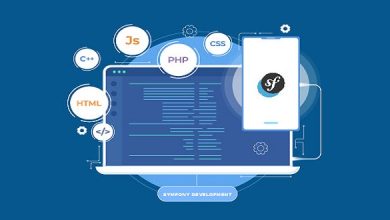5 Key Benefits of Using Managed SIEM With Cloud Technology

In the ever-evolving landscape of cybersecurity, organisations face constant threats and challenges that require robust security measures. And one essential component of a comprehensive security strategy is Security Information and Event Management technology, which provides monitoring, threat detection, and incident response capabilities. When combined with cloud technology, this powerful duo offers a range of benefits for organisations seeking to strengthen their security foundations. So in this blog, you explore five key advantages of leveraging cloud-based managed SIEM in Australia.
- Enhanced Threat Detection and Visibility
Cloud-enabled security solutions provide organisations with enhanced threat detection and visibility across their digital landscape. By leveraging advanced analytics and machine learning capabilities, these solutions analyse vast amounts of security data from various sources in real-time. Log analysis, network monitoring, and behaviour analytics can identify potential threats, anomalies, and malicious activities, empowering organisations to respond to security incidents and mitigate risks effectively and proactively. This comprehensive view enables organisations to gain better visibility into their infrastructure and detect threats that may go unnoticed with traditional security measures.
- Scalability and Flexibility
Cloud-based security solutions offer scalability and flexibility, allowing organisations to adapt to their evolving needs. These solutions can effortlessly scale up or down based on the organisation’s requirements, accommodating fluctuating workloads and ensuring that security resources are optimally allocated. Unlike traditional on-premises solutions that require upfront investments in hardware and infrastructure, cloud-based security solutions leverage the elasticity of cloud computing to provide the necessary resources on demand. This flexibility enables organisations to effectively manage security operations, regardless of their size or the complexity of their digital infrastructure.
- Cost-Effectiveness
Cloud-enabled security solutions offer cost-effectiveness by eliminating the need for extensive on-premises infrastructure and maintenance. With traditional SIEM solutions, organisations must invest in servers, storage, and other hardware components and bear the costs associated with maintenance, upgrades, and ongoing management. However, by leveraging cloud-based SIEM solutions, organisations can offload the infrastructure and maintenance responsibilities to cloud providers. Cloud providers manage the underlying infrastructure, including hardware maintenance, security patching, and system updates, allowing organisations to focus on their core business functions. This shift to an operational expenditure (OpEx) model reduces upfront capital expenditures and ongoing operational costs, making cloud-based security solutions more affordable and accessible to organisations of all sizes.
- Improved Collaboration and Access
Cloud technology facilitates seamless collaboration and accessibility across geographically dispersed teams and stakeholders. With cloud-enabled security solutions, organisations can centralise security data, insights, and incident management in a single platform accessible to authorised personnel from anywhere, at any time. This real-time collaboration and accessibility foster effective communication, streamlined incident response, and alignment of security practices across the organisation. Security teams can collaborate in real-time, share insights, and coordinate response efforts, regardless of their physical locations. This level of collaboration enhances the organisation’s ability to detect and respond to security incidents promptly, reducing the overall impact and mitigating potential damage.
- Heightened Security and Compliance
Cloud-based security solutions are built upon robust security frameworks, leveraging the expertise and investments of cloud providers in securing their infrastructure. These solutions offer advanced security features such as encryption, multi-factor authentication, and access controls, ensuring the protection of sensitive data and mitigating the risk of unauthorised access or data breaches. Cloud providers typically employ industry best practices and adhere to stringent security standards, continuously monitoring and updating their systems to address emerging threats. Moreover, compliance requirements, such as the Notifiable Data Breaches (NDB) scheme and industry-specific regulations, have emphasised the importance of robust security practices and incident response capabilities. Also, cloud providers often adhere to stringent compliance standards and regulations, assisting organisations in meeting industry-specific and regional compliance requirements. So by leveraging cloud-enabled security solutions, organisations can take advantage of these built-in security measures and compliance frameworks, ensuring that their security posture aligns with regulatory requirements and industry best practices.
In today’s digital landscape, building strong security foundations is paramount for organisations to safeguard their valuable assets and sensitive data. And by leveraging the benefits of cloud-enabled security solutions, organisations can enhance threat detection, improve scalability, reduce costs, foster collaboration, and ensure compliance with regulations. As such, embracing cloud-based managed SIEM in Australia empowers organisations to stay one step ahead of cyber threats, bolster their security defences, and confidently navigate the complex cybersecurity landscape. The synergy between cloud technology and advanced security capabilities helps organisations build stronger security foundations, providing the necessary protection in an ever-evolving threat landscape.





